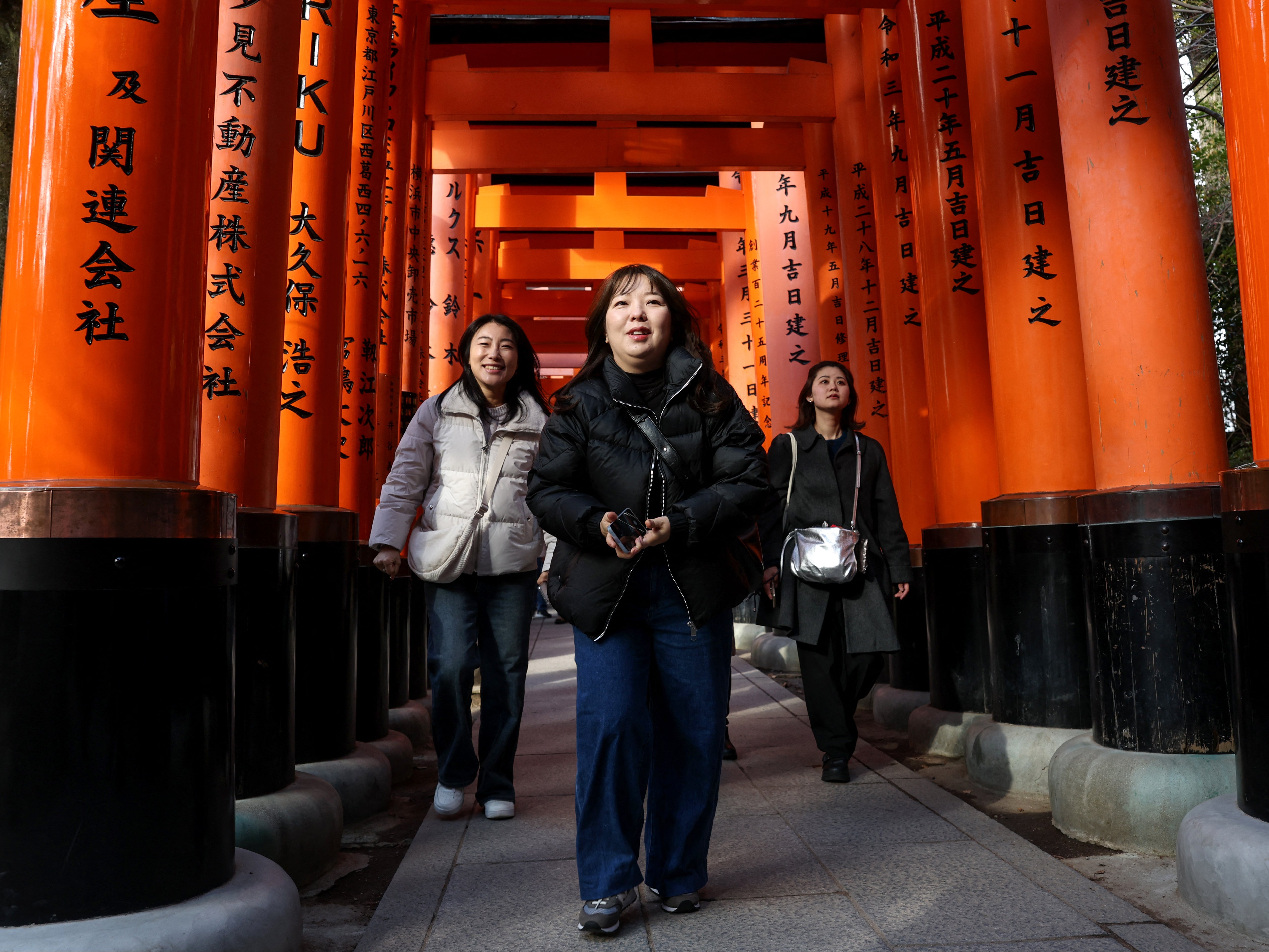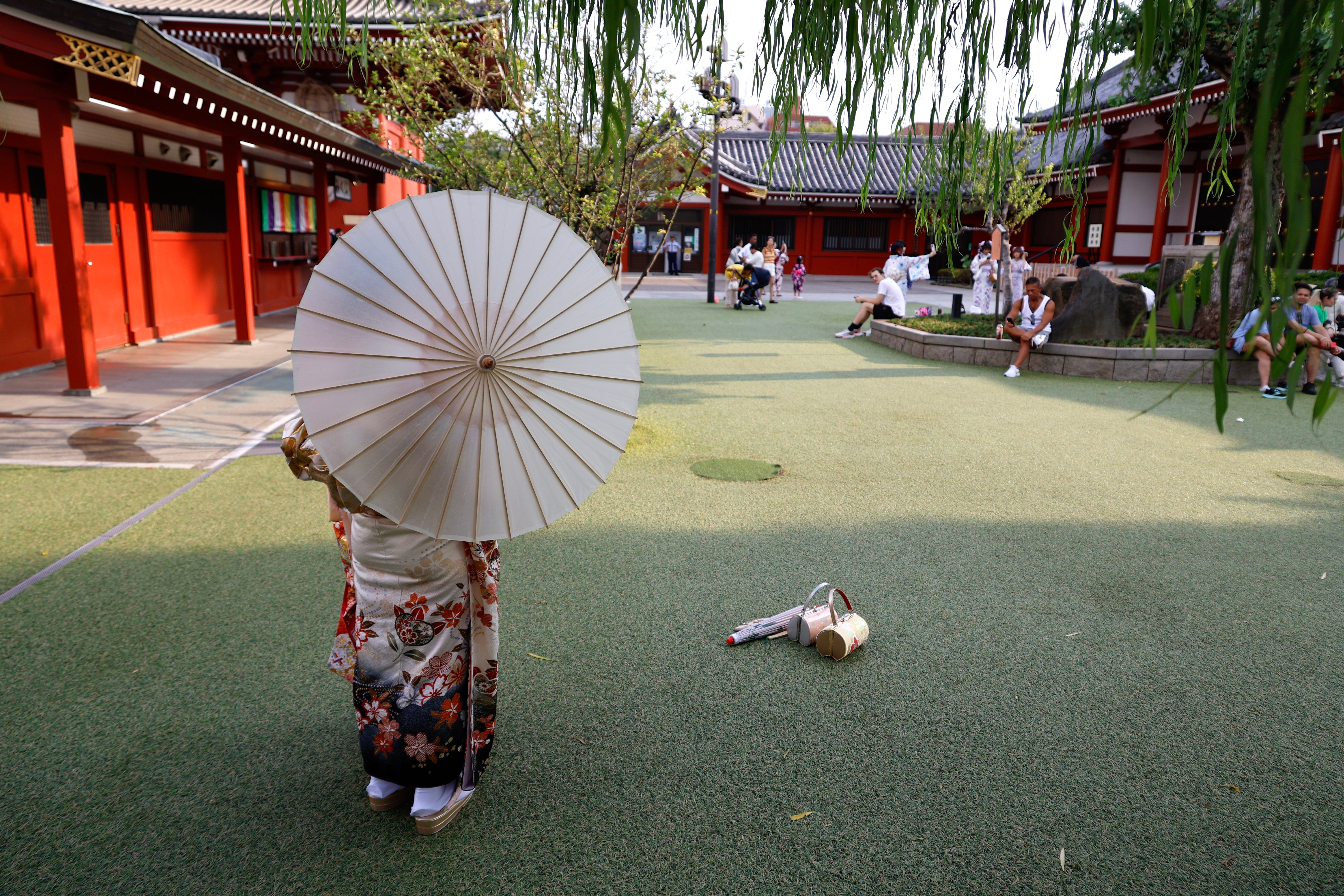Japan smashes annual record with more than 36 million tourists in 2024
Japan saw more than 36.8 million visitors in 2014, a record since 2019

Your support helps us to tell the story
From reproductive rights to climate change to Big Tech, The Independent is on the ground when the story is developing. Whether it's investigating the financials of Elon Musk's pro-Trump PAC or producing our latest documentary, 'The A Word', which shines a light on the American women fighting for reproductive rights, we know how important it is to parse out the facts from the messaging.
At such a critical moment in US history, we need reporters on the ground. Your donation allows us to keep sending journalists to speak to both sides of the story.
The Independent is trusted by Americans across the entire political spectrum. And unlike many other quality news outlets, we choose not to lock Americans out of our reporting and analysis with paywalls. We believe quality journalism should be available to everyone, paid for by those who can afford it.
Your support makes all the difference.Japan welcomed a record 36 million tourists in 2024, according to official figures released on Wednesday.
Estimates from the Japan National Tourism Organization revealed that more than 36.8 million people visited the country for business or leisure in 2024, surpassing a previous high of 31.88 million in 2019.
“If things go well, 2024 total will surpass 35 million,” national tourism agency commissioner Naoya Haraikawa had said earlier. In the first 11 months of 2024, there was a significant increase in visitors from the US, Europe, South Korea, Taiwan, and Hong Kong.
The Japan National Tourism Organization revealed that 3.19 million foreign visitors arrived for business and leisure in November of last year alone. The number was slightly lower than October’s 3.31 million, which was the highest for any month.
In 2024, visitor spending rose by 53 per cent to 8.14 trillion yen ($51.78bn), driven partly by a weaker yen, which hit a 40-year low against the US dollar.
Harry Hwang, Regional Director for Asia and the Pacific at UN Tourism, highlighted at Tourism Expo Japan in September last year that Japan has been “leading the recovery” of international tourism in the Asia-Pacific region, citing record-breaking numbers of inbound visitors in recent months.
The surge in tourists has been attributed in major part to a weaker yen which has made Japan more attractive to international tourists.
The soaring numbers, however, have sparked concerns about “overtourism” at popular destinations, leading to challenges in managing visitor flow and preserving local environments.

Last week, it was reported that the popular travel destination of Kyoto in Japan is significantly raising the accommodation tax in an attempt to curb overtourism by reducing visitor numbers.
The city plans to raise lodging tax for hotels and other accommodations to a maximum of 10,000 Japanese yen (£52) per person per night – nearly 10 times the current cap of 1,000 yen (£5.20).
Mayor Koji Matsui earlier said taxes would be raised “to balance tourism and the livelihoods of local residents”.
In November last year, it was reported that several Japanese cities are increasing the “bathing tax” for overnight visitors to onsen (hot spring) resorts, in an attempt to deal with rising tourism.

This tax has been raised in regions including Hokkaido, Beppu in Oita prefecture, and Shizuoka, according to local reports, to help fund conservation projects and protect hot spring resources.
In July last year, it was reported that Japan hiked the entry fees and restricted the number of visitors to tackle overcrowding on Mount Fuji as the climbing season kicked off in July.
Given the over-tourism, the Japanese government is urging foreign visitors to travel during off-peak times, explore lesser-known destinations, and adhere to local customs.
Julia Simpson, president and CEO of the World Travel & Tourism Council, was quoted last month by The Japan Times as saying that Japan’s growth was attributed partly to the “positive exchange rate for international travellers” due to the weak yen.
But Central European Institute of Asian Studies (CEIAS), a think tank focusing on Europe-Asia relations and developments in the Indo-Pacific region says that the strongest factor has been “revenge travel” after Covid-19 restrictions were lifted worldwide, as well as “more favourable visa policies, improved connectivity and increased government spending, such as its hosting of the World Expo in 2025”.
The Japanese government has an ambitious target of attracting 60 million inbound visitors each year by 2030.
Join our commenting forum
Join thought-provoking conversations, follow other Independent readers and see their replies
Comments